Arturia V Collection 6 Review – That is one big pile of Synths
Arturia’s collection of classic synths and keyboards has almost become a classic in itself. Andy Jones looks back (and forward) at its latest additions… Price €499 [€149 to €199 per plug-in] Contact Arturia | Source Distribution | 0208 962 5080 V Collection 6 key features: When the music-production world went software bonkers – that is, […]
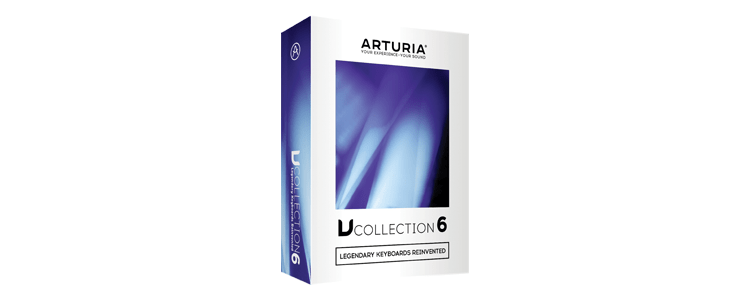
Arturia’s collection of classic synths and keyboards has almost become a classic in itself. Andy Jones looks back (and forward) at its latest additions…
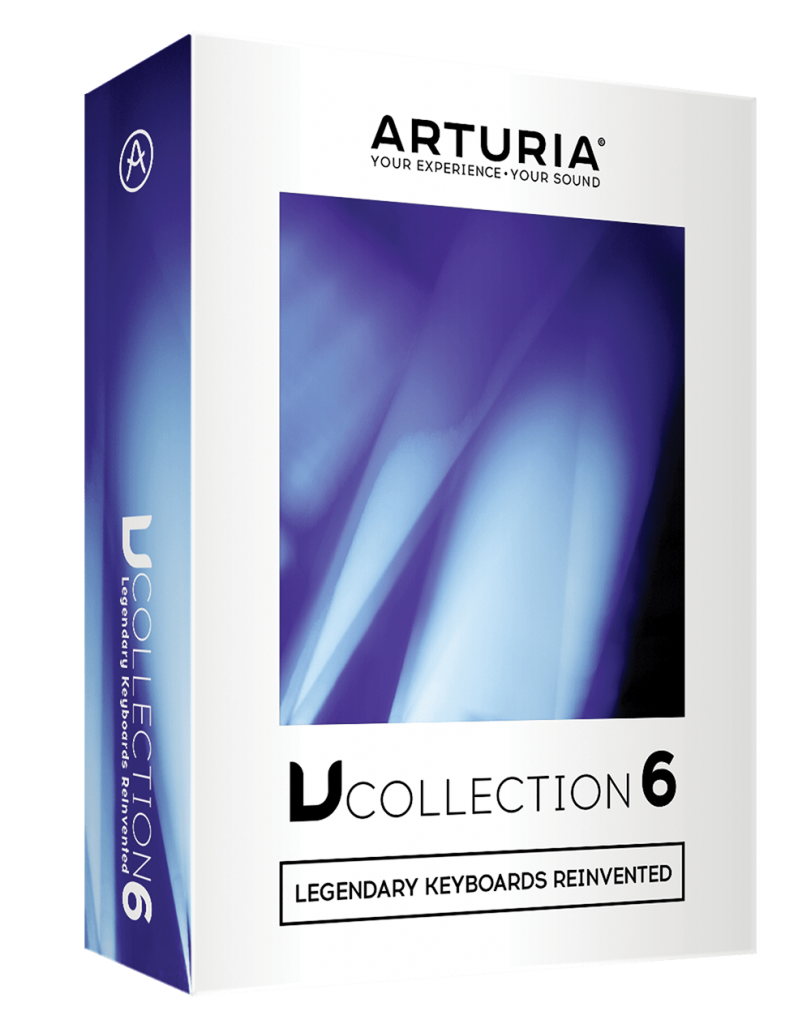

Price €499 [€149 to €199 per plug-in]
Contact Arturia | Source Distribution | 0208 962 5080
V Collection 6 key features:
When the music-production world went software bonkers – that is, everyone and his dog (including me) thought that we should all be making music with laptops and nothing else – one of the first targets for emulation in the software environment was the vintage synth.
Of course it was. We were – and still are – talking tens of thousands of pounds for some examples of the real thing. The Yamaha CS-80 is arguably the most coveted, but Minimoogs, ARPs, Prophets, Rolands and Korgs all still have grown men drooling and wobbling at the knees for their lush – or tearing – analogue sounds.
Of course, hardware has since ‘resumed play’, coming back with something of a vengeance as some of those classic companies get rebooted for the 21st century – think Moog, Oberheim, Sequential/DSI and ARP by Korg – and some are reborn in the fantastic yet complex world of the Eurorack/modular synth.
Yet for many of us, software was – and still is – the only way to get those vintage sounds and luckily, there are many, many soft ways to do just that. There are stacks of freebie vintage synths – DX, OB, Minis and more – and iOS devices are spoilt rotten with some incredible titles from Korg, IK and Arturia. And it was Arturia which led the way back in the soft day with its V-Collection, the sixth incarnation of which is on test here.
V for victory
We haven’t reviewed V Collection as a complete package before – but have covered several of the instruments or their iOS versions separately – so I’ll take this opportunity to detail some of the rest of the collection as well as the new additions for version 6. These are four new instruments: the Buchla Easel, V, Clavinet V, CMI (Fairlight) V and DX7 V.
On top of that, Analog Lab has been updated to V3. As we’ll see, this is the software that allows you to manage the sounds from the entire collection behind one interface – it takes the preset strain, basically. Finally, the Piano instrument has been updated and there are new GUIs for the Vox Continental, Wurli and Solina.
Do I really need this?
That is a very good question. Whether you ‘need’ the whole V Collection is dependent on your present plug-in collection, your level of obsession with vintage sounds and your bank balance. If your collection is sparse, we’d say go for the whole thing. While you can cherry pick individual instruments, at between €149 and €199 that would be an expensive option. Get three and you might as well buy the whole lot.
If you’re obsessed with vintage, then V collection is for you. Even though many analogue purists will laugh in the face of these digital equivalents and not go near them, we think they’re missing out, as a lot of effort has gone into recreating the instruments’ original sounds. Sure, they might not be as dirty, crunchy and out of tune as the originals and there’s a bit too much sheen in places, but you’ll not find more ‘vintage’ unless you stumble across one of those trendy markets in Hoxton or Brighton.
Setting up and the older titles
Once purchased, you get a list of titles within V Collection to download within your account at the Arturia website. But you’ll be wise to just download Arturia Software Centre, which acts as a shell to download all the titles. With this app, Arturia has thankfully sorted its software-registration process out. It used to be a chore, but now this Software Centre (not unlike NI’s version) makes it very easy to choose, download and install instruments.
Nothing feels too weighty, either. Of the new instruments, Analog Lab V3 is probably the biggest at around 1GB. Even with my terrible web connection, I was up and running with all the new titles – and a good selection of the older ones – in no time. Logic picked them up as quickly, so I was soon ready to go.
Before I get on to those newer titles, I’ll briefly run through some of the highlights of the older collection. The Prophet V was one of Arturia’s first emulations, but the company has kept it reasonably fresh by including the VS Digital Vector synth… so you get a kind of ‘best of analogue and digital’ sound set with it. The Vector synthesis is not unlike my old Yamaha SY22, where you move a joystick between four sounds to get some lovely movement.
It’s a great synth for lush and harsher pad sounds and is packed full of both. Having had a DSI Prophet 6 for a while, this Prophet will be a welcome addition to my library and will certainly stay on my drive.
Next of the older titles I downloaded is that already mentioned CS-80, a clone of the original Yamaha and Vangelis favourite. For my ageing eyes, it’s a bit too much of a clone, with the sliders and knobs far too small (though the GUI can be resized). With some instruments (notably the DX, which I’ll come to), Arturia has simplified the front panel. But with the CS-80 V, you get everything laid out as with the original.
Thankfully, there are options to make certain parameters more visible at the top of the GUI and the size of the GUI itself can be adjusted, so my glasses are not needed. And whatever… CS-80 V has a sound to die for: rich, varied and a different sonic angle at every turn. It quickly makes you realise why the original is held in such high regard and, again, this won’t be leaving my computer any time soon.
Next up, another classic – the ARP 2600. This will please bleepy modular fans and those, like me, who were perhaps a little too obsessed with early synth music from Sheffield. Lots of grungy sequences, powerful leads and random bleeps. Lovely stuff, with lots of rhythmic swaying and drifting that could be at home in newer EDM tunes, too. It’s a synth that you could easily go mad with, but Arturia has supplied the white lab coat and instructions – just experiment to your heart’s content. I’d say this is one of my favourites – but then I do have those early Human League tastes…
Next, another classic and another one of Arturia’s earliest emulations, the Jup-8, a recreation of everyone’s favourite Roland. This suffers from the same ‘authenticity over ease of reading’ issues that the CS-80 does but again, there’s an expansion option to reveal more and bigger parameters including an excellent sequencer that brings a lot of movement to the presets. And, as with the CS, you wait until you hear the damn thing. This is as good and lush-a-sounding synth as you can get, which not only ticks the vintage-sounding boxes, but has the odd contemporary twist along the way, too.
All new for V Collection 6
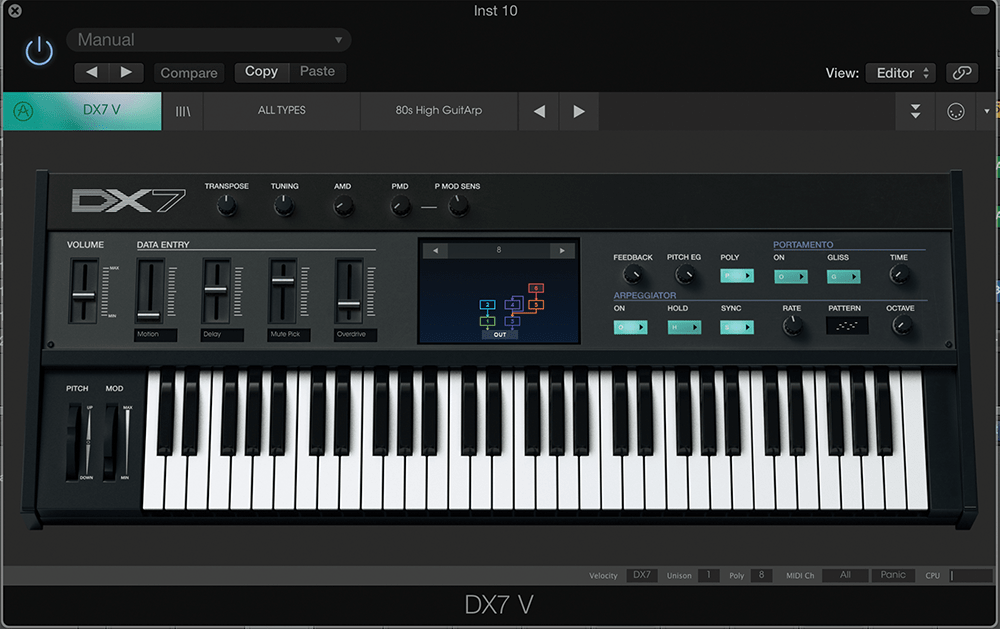
DX7 V
The synth that featured on (virtually) every Top Of The Pops in the 80s and soundtracked that decade. It’s a thin-tied, trouser-pleated goodie…
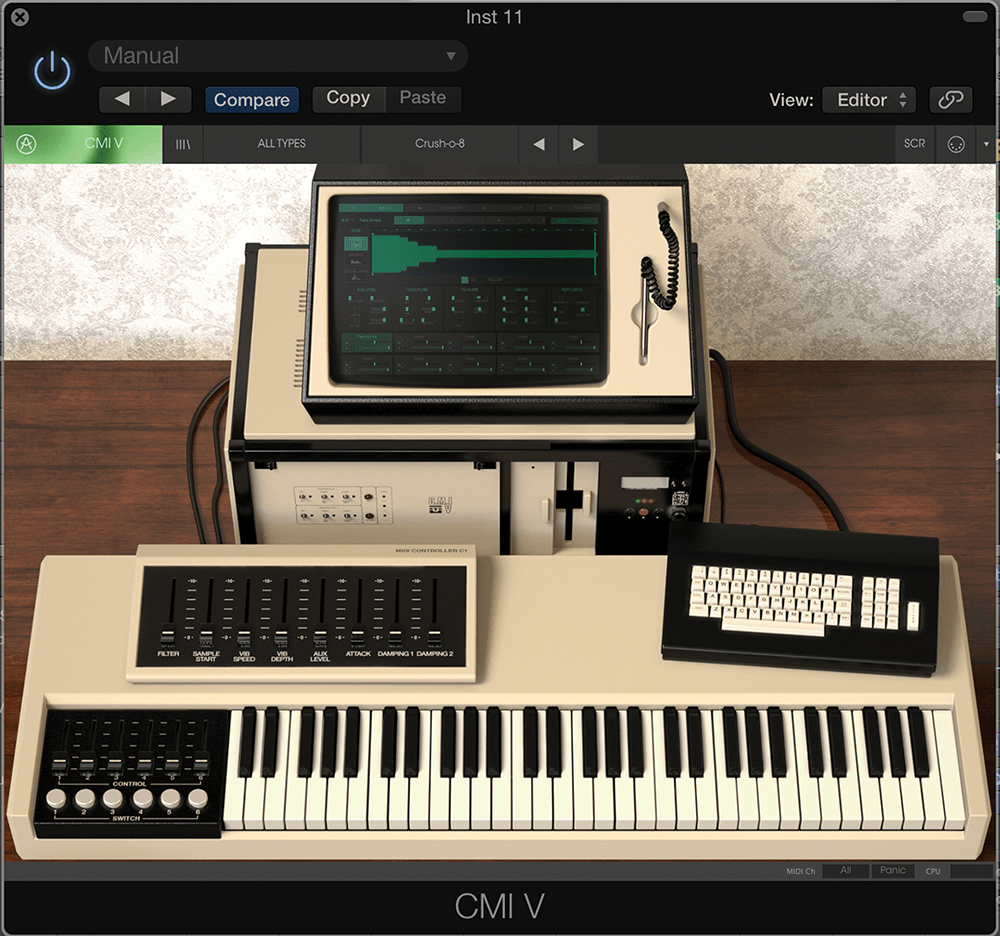
CMI V
This models the Fairlight sampler, one of the first pieces of tech for mangling and playing digital audio. CMI V lets you load your own samples, too.
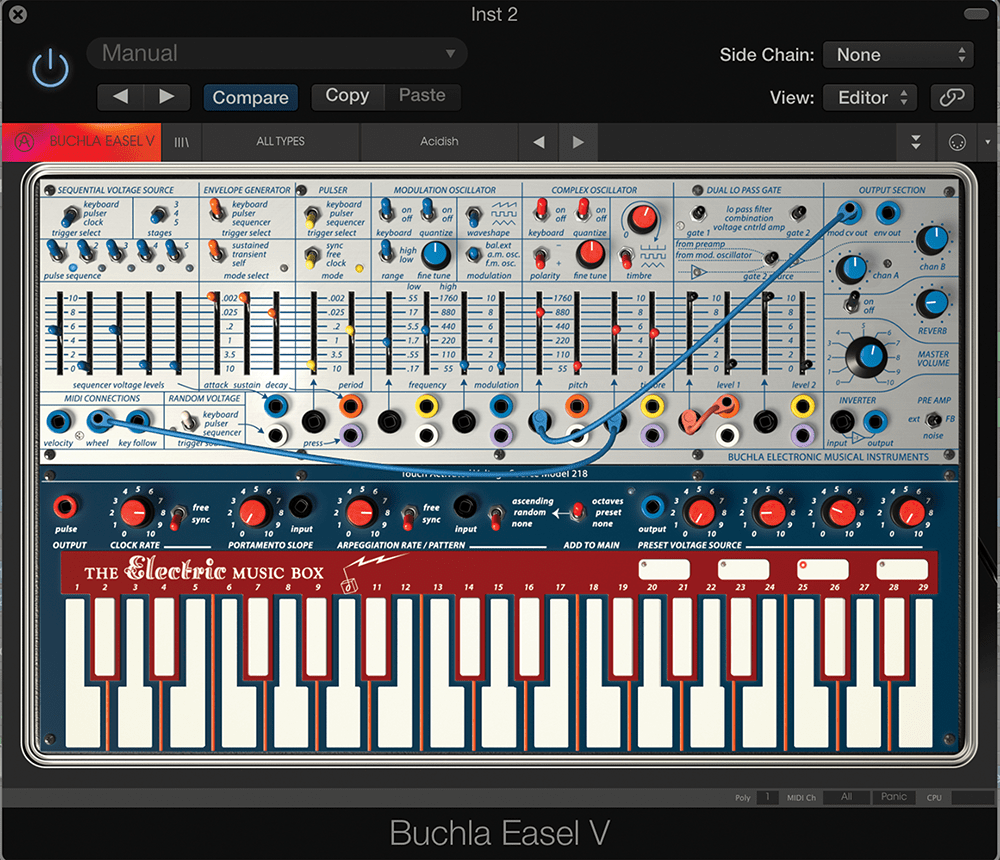
Buchla Easel V
The original semi-modular Buchla Easel was first made in 1973 and had a varied sound and metal touchplate keyboard – ‘quirky’ doesn’t do it justice…
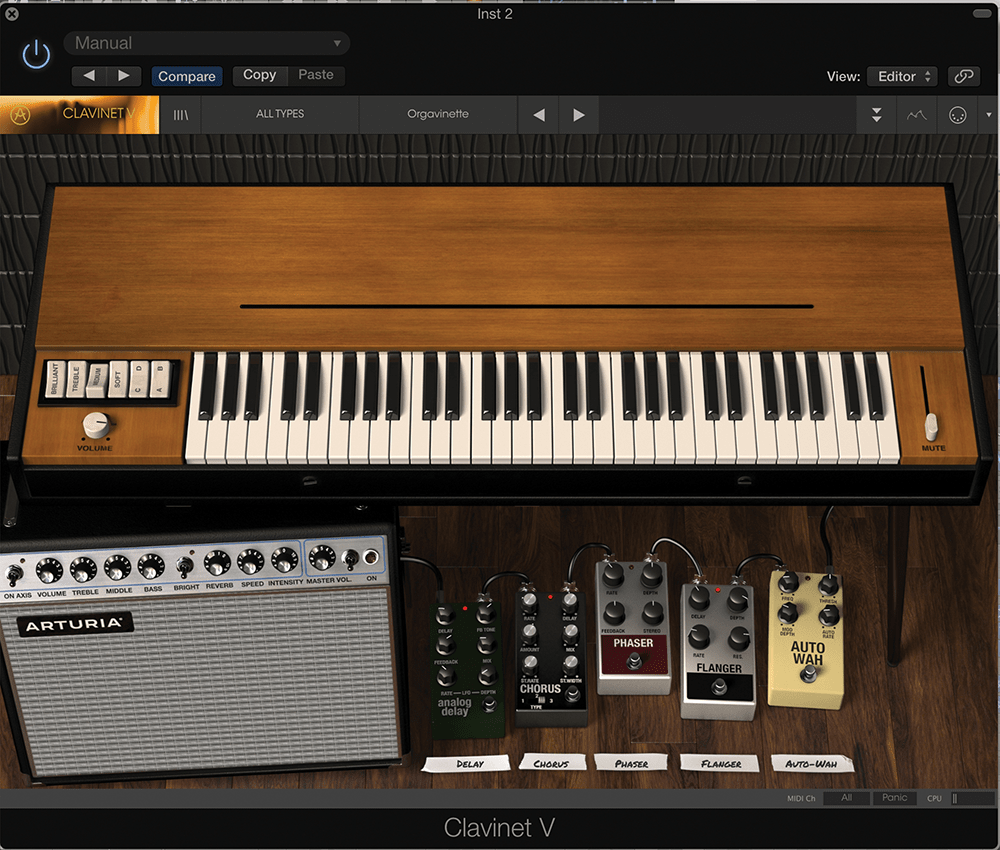
Clavinet V
The new Clavinet instrument is a simple but effective recreation of the original electric-type piano, complete with amp and pedal effects.
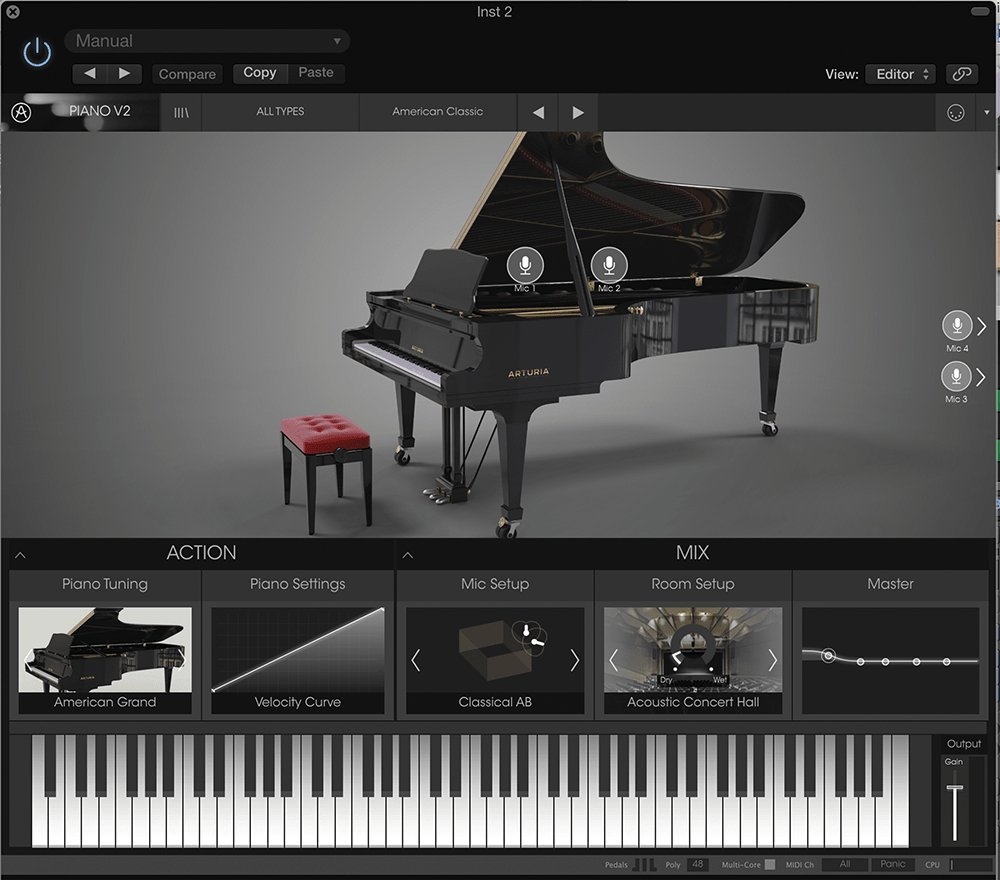
Piano v2
The Piano instrument has also been updated in V Collection 6 and has some excellent and varied sounds and different mic-recording positions.
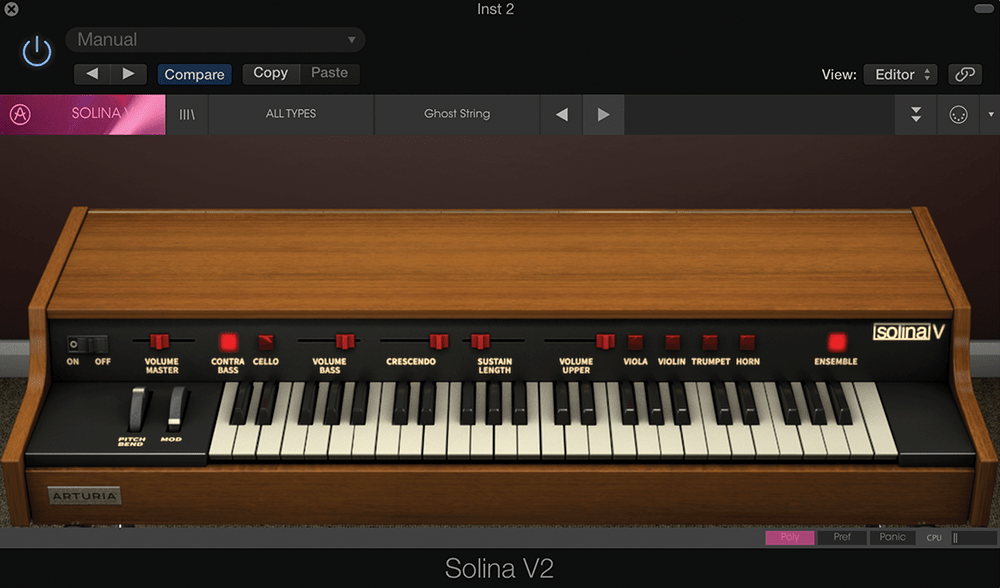
GUI updates
Finally for v6, three instruments – Solina V, VOX Continental V and Wurli V – get new faces. Here’s Solina v2, with its excellent string sounds.
And so to the newbies
Now to look at what’s fresh for V Collection V6 – and I’ll focus on the new instruments. On the face of it, it’s a very varied line up. The DX7 was just about the best-selling synth of its time back in the 80s, but I’ll bet there are many who believe it should stay back there. It became well known for its percussive FM sounds, a kind of West Coast keys feel (LA, I mean, not Newquay) and a hardcore programming interface that only Brian Eno ever understood.
Arturia has fortunately chosen not to recreate the awful and confusing front panel of the original, but instead, you can open the synth up to get to the heart of its operator/modulator synthesis structure. With four tabs covering all of your bases, you’ll quickly start making real-time and very dramatic changes to sounds you’ll never have dreamt of doing with the original.
It’s a lesson in synthesis – the Envelope section for the Operators is particularly revealing – and an enjoyable one, too… and you’ll soon realise that FM doesn’t have to be all about the 80s; there are a lot of genres it can fit into today. That said, it’s still about sounds with sharp attacks, although you do get one or two surprises: who would have thought a digital synth like this could be so capable of producing acid basslines?
Next is a semi-modular beast by the name of the Buchla Easel. Don Buchla is perhaps one of the unsung heroes of synth design and his hardware was nothing if not unusual. This initially looks like a very complex Stylophone – albeit one with a stack more parameters to wrestle with.
Arturia Analog Lab 3 overview
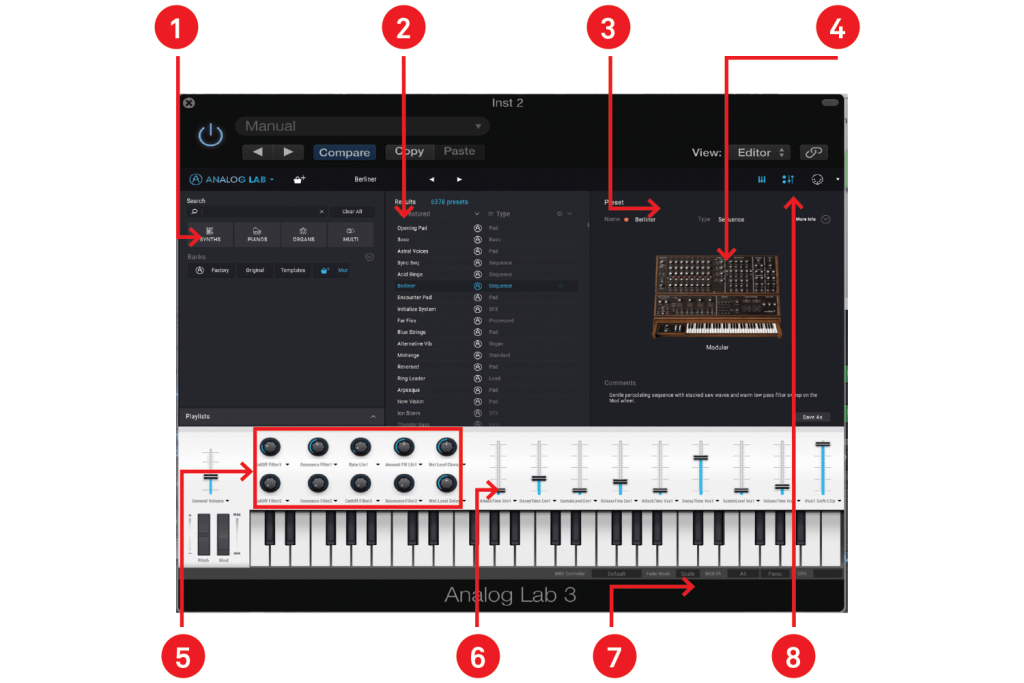
1. Main categories
Analog Lab V3 is designed to manage all of the presets within V Collection behind one manageable interface. You start by selecting your sound type here
2. Presets
As you start homing in on your chosen preset, this list will diminish from the initial 6,378 (as shown) – the total number of sounds in V Collection. Enough for you?
3. More preset details
Here, you get to learn more about your chosen sound; its type, name and the person who designed it. There’s even a line to describe it…
4. Which instrument?
Once you’ve selected a preset, you’ll see which instrument it’s from here – in this case, the Modular
5. Key controls 1
You really can get away with just using Analog Lab rather than each individual instrument – even their key parameters are copied across here for you to control
6. Key controls 1
These sliders also represent some of the key controls on the original instrument; in this instance, some of the envelope parameters
7. Main arrangement
These options let you hook Analog Lab up with Arturia controllers such as KeyLab, reviewed last issue
8. GUI options
As with many of the instruments within V Collection, you can click on tabs to reveal or hide controls. In this case, these will remove the keyboard and controls above it.
I’ll not pretend to be an expert on Buchlas, although I know many people who adore them. KMR sells a new version of this hardware synth and describes it as “a complex Additive Analogue Synthesiser that allows the sonic possibilities of Buchla’s modular systems, but in a very small, compact briefcase-equipped package”.
KMR’s costs the better part of five grand and you’d be hard pressed to find an original, as only a few were made. So it’s a bit of a coup to get a version in V Collection. As for what it sounds like? Well, initially, it’s pretty much the entirety of Superbooth (that cool Berlin-based modular-synth show) in one box. It shouts: ‘bleeps, whirls, sequences, sounds with movement…’ and perhaps: ‘you need to get out more’.
I love what you can do with it, though and you’ll soon realise that it can do a lot more than those first impressions.Next up, we have the silky, swirly ‘Stevie’ Clavinet. After the Buchla, this one is almost welcoming in its simplicity. There are fewer controls, an easy-to-understand set of pedal effects (that varies with the presets) and amp setup.
There are rather fewer presets to get your head around than with other instruments in V Collection – no bad thing; the Clavinet is quite a specific electric-keyboard instrument, after all. It does the job well and I do like the way it’s laid out and set up.
Finally, staying with the new instruments, it’s the turn of CSI, a recreation of the Fairlight sampler. This was a hugely expensive early sampler that once again defined an era in pop – think early-to-mid 80s – when a whole world of sound was brought into the studio by way of digital audio recording and playback and then turned into melodies and beats by way of this and the Synclavier (also in V Collection).
These were forerunners of the rackmounted Akai and E-mu samplers that took over in the 90s, before software took over in the 2000s. I’m not sure a software version of the hardware isn’t taking things a little far, but some may like the crunching sounds and low-bit-rate feel. There’s also rather more than you can do by clicking on the computer screen, which reveals a whole lot of editable parameters and a sequencer that’s put to good use providing beats on some of the presets.
It’ll appeal to some people, I’ve no doubt, but not as much as the DX and Buchla, which are the highlights of the update.
Conclusion
As a whole, though, the additions of the four instruments means V Collection is a nicely rounded set of keyboard instruments that offers something for every kind of keyboard sound: analogue, digital, modular, acoustic, organ and more. The four additional instruments are quite eclectic – certainly the Buchla and DX, anyway – and while I love Arturia for selecting them, I’m not convinced that all of those who already own version 5 will automatically make the leap.
But as a collection, this is a great buy, especially when you consider the significantly costlier price of each instrument if bought separately. It’s a huge saving and, of course, you only have to consider the price of all of the original hardware together…
The V Collection offers you a hell of a lot of classic sounds – and also a lot more contemporary sounds, it must be said – for the money. Still outstanding.
Alternatives
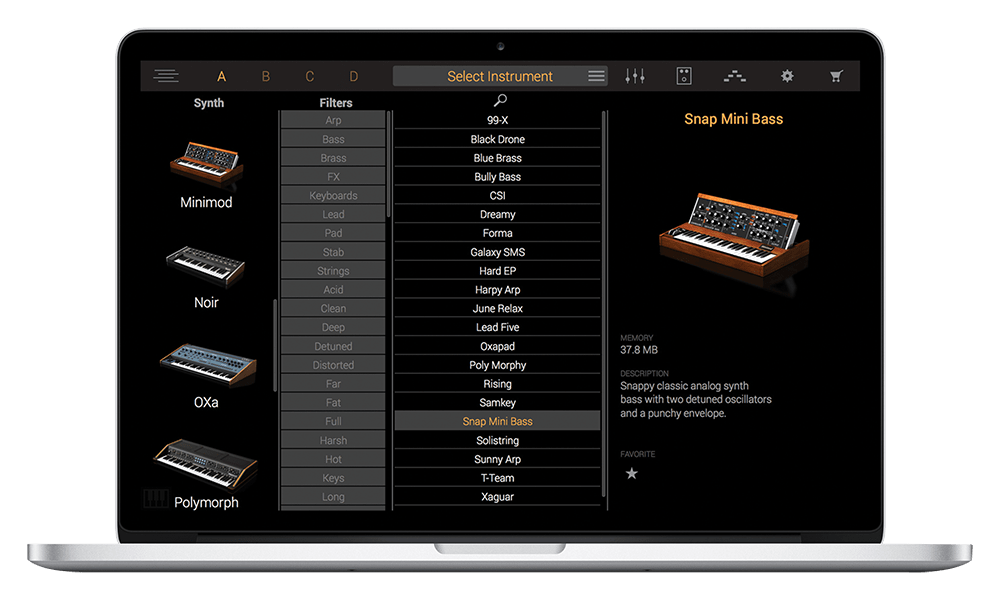
IK Multimedia
Syntronik £329
Probably the most direct competitor, IK’s recent release features 17 instruments based on more than 40 classic synths with a great preset browser and over 2,000 sounds and effects. It was recently also announced for the iPad, too.
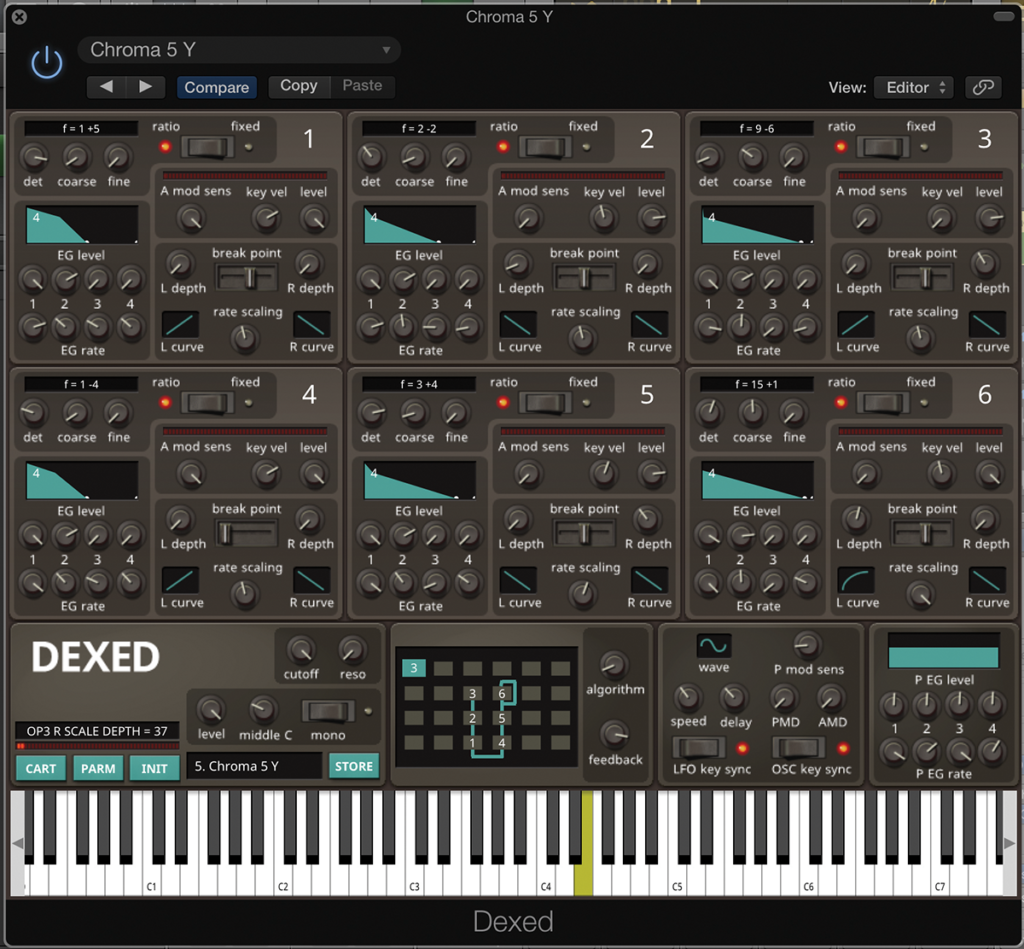
Various
Freeware £0
There are all manner of classic free synths. I’ve tested some pretty good DX emulations, and some okay Roland ones. If I’m honest, though, they very often just offer basic controls rather than the extra graphic, great sounds and effects Arturia offers.